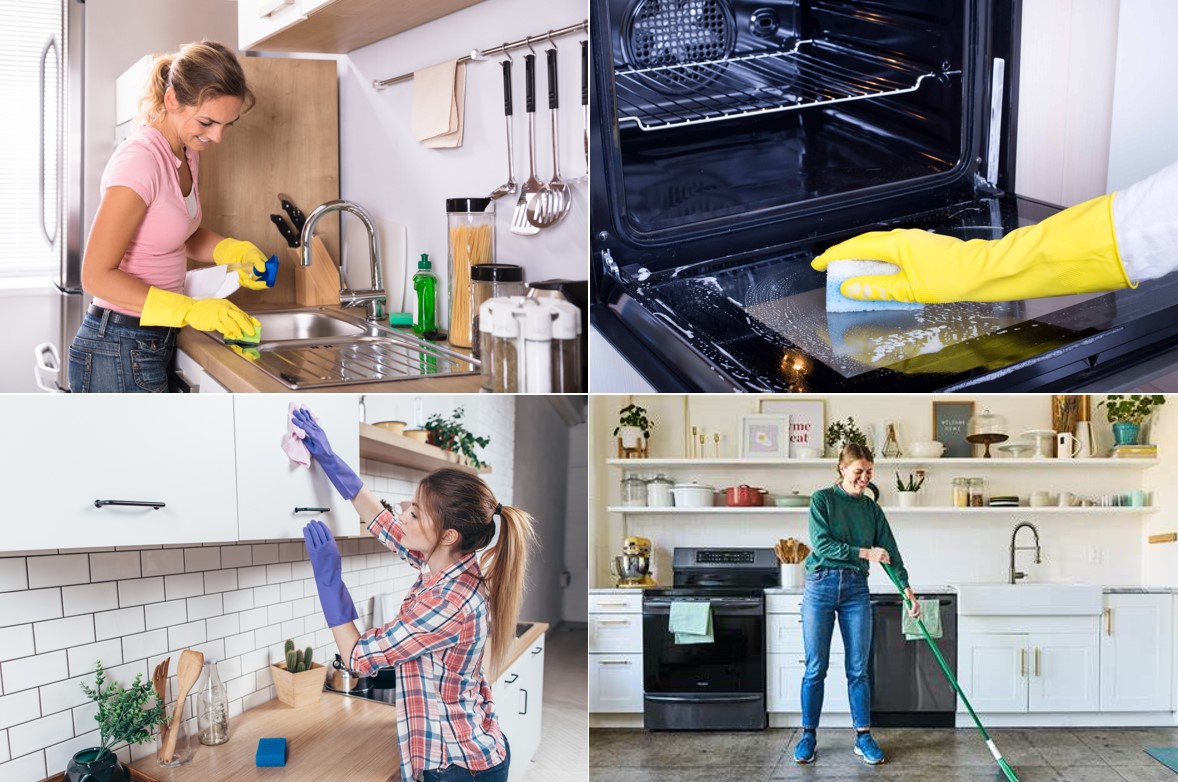Kitchen Cleaning
Kitchen cleaning involves thorough cleaning and sanitization of all surfaces, appliances, and fixtures in the kitchen area. It's essential to maintain a clean kitchen not only for aesthetics but also for food safety and hygiene.
Surface Cleaning: This includes wiping down countertops, cabinets, and tables to remove dust, dirt, and spills. Surfaces should be cleaned using appropriate cleaning agents that are safe for food preparation areas.
Appliance Cleaning: Appliances such as stoves, ovens, microwaves, refrigerators, and dishwashers should be cleaned both inside and out. Grease, food residue, and spills should be thoroughly removed to prevent buildup and ensure proper functioning.
Sink and Faucet Cleaning: The sink and faucet should be cleaned and sanitized to remove bacteria and germs. Pay special attention to the area around the sink, including the drain and faucet handles.
Floor Cleaning: Floors should be swept and mopped regularly to remove dirt, crumbs, and spills. Grout lines and hard-to-reach areas should be cleaned to prevent grime buildup.
Storage Organization: Cabinets, pantry shelves, and drawers should be organized to maximize space and facilitate easy access to utensils, cookware, and ingredients. Remove expired items and wipe down shelves as needed.
Trash and Recycling: Empty trash bins regularly and clean both the inside and outside of the bins to prevent odors and bacteria buildup. Recyclables should be sorted and disposed of properly.
Deep Cleaning: Periodic deep cleaning of the kitchen is essential to remove stubborn stains, grease buildup, and hidden dirt. This may involve cleaning behind appliances, inside cabinets, and other hard-to-reach areas.


